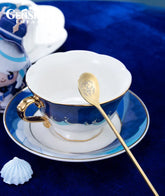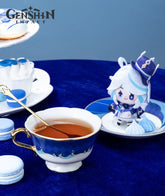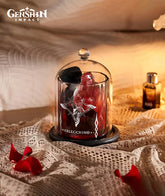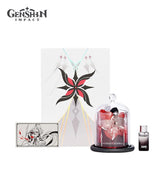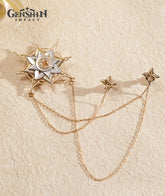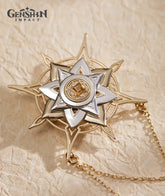Genshin Impact Escoffier: A Reimagined "Father of Modern French Cuisine"?
Did You Know Which Historical Figure Genshin Impact's Escoffier Pays Homage to? With Escoffier's release, this character has resonated globally, and the countless "references" in the character trailer are particularly amusing. Follow our article today to explore the historical inspirations behind Escoffier!

1. The Design Inspirations Behind Escoffier
First, let's answer the opening question: Do you know which historical figure Genshin Impact's Escoffier pays tribute to? The answer is Auguste Escoffier (1846-1935), hailed as the "Father of Modern French Cuisine." He stands as one of the most influential Western chefs in history and is credited with elevating the culinary profession to an art form. The French government awarded him the Légion d'Honneur-one of France's highest honors-making Escoffier the first chef ever to receive this distinction.

Auguste Escoffier established foundational principles that still define Western culinary practices today. If you know chefs passionate about Western cuisine, ask them-they might feel their "culinary DNA" resonating with his legacy.
2. The Enduring Contributions of Auguste Escoffier
Escoffier was born in 1846 in Villeneuve-Loubet, southern France. He began his culinary apprenticeship at age 14 and rose to become a master chef. Unlike traditional chefs focused solely on technique, he acted as a "culinary philosopher," emphasizing ingredient harmony, sequence, nutrition, and aesthetics. His seminal work Le Guide Culinaire remains a global "culinary bible," standardizing thousands of French dishes and codifying the five mother sauces: rich espagnole and tomato for meats; hollandaise (egg yolk, butter, lemon); light velouté for poultry/fish; and the iconic béchamel.

His military service during the Franco-Prussian War inspired his belief that kitchens must operate with military precision. He revolutionized culinary practices by mandating strict hygiene, professional conduct, and the now-universal white chef's uniform. He replaced chaotic banquet-style service with the refined Russian service (courses served sequentially), likely adapted from Tsarist court traditions.
Pairing streamlined menus (appetizer, main, cheese/salad, dessert) with his Kitchen Brigade System-specialized roles like sauce chefs and pastry chefs-he ensured precision and efficiency. This model remains the gold standard for fine dining globally.

Notably, many innovations, including structured culinary apprenticeships, emerged during his tenure in London. His true zenith began in late-19th-century England, where he reshaped haute cuisine by blending French rigor with British hospitality at landmarks like the Savoy Hotel.
3. Genshin Impact Escoffier: "The Fairy of Fondant Felicity"
Why is Escoffier called "The Fairy of Fondant Felicity" and "The Towering Tyrant of Taste"? The answer lies in Auguste Escoffier's transformative 30-year overhaul of British haute cuisine during his time in England.

When he became executive chef at London's Savoy Hotel in 1890, British dining-despite its opulent ingredients and aristocratic tables-remained chaotic, with heavy, greasy dishes lacking refinement. Escoffier revolutionized this by introducing military-style kitchen discipline (like the Kitchen Brigade System) and prioritizing ingredient integrity over excessive sauces. He crafted delicate menus for royalty, designed elegant ladies' luncheons, and taught the elite to dine with cultural sophistication.
Auguste Escoffier's influence in British gastronomy was so profound that even the king heeded his advice. King Edward VII adored Escoffier's dishes but indulged in overly rich meals. Legend has it that Escoffier once discreetly asked the prince, "Could His Majesty consider lighter fare?" The prince laughed, "You dare suggest it? I wouldn't!" Escoffier then crafted a low-fat menu-visually stunning and delicate-which the king surprisingly embraced.
Despite his strict culinary standards, Escoffier was warm and creatively romantic. When Australian soprano Nellie Melba dined at the Savoy after her performance in Wagner's Lohengrin, Escoffier, inspired by her artistry, created a dessert of poached peaches, vanilla ice cream, and raspberry sauce, served on an ice-carved swan wing to mirror the opera's imagery. Recall the ice swan in Escoffier's skills? He named it Pêche Melba, now a French culinary icon.

His dessert innovations extended further: strawberries named for actress Sarah Bernhardt and single-flavor ice creams democratizing the treat for all-perhaps why Escoffier is Cryo-aligned and dubbed "The Fairy of Fondant Felicity.
4. The Fascinating History of Auguste Escoffier
Of course, Escoffier's time in England wasn't without controversy. While working as head chef at the Savoy Hotel, he and manager César Ritz engaged in shady practices (common at the time), such as selling the hotel's premium wines, gifting ingredients to wealthy patrons as "favors," and accepting "special tips." After discrepancies were found in the accounts, both were fired. Could Escoffier's backstory as the former head chef of the Debo Grand Hotel reference this? Yet after their dismissal, they returned to Paris and opened the Hôtel Ritz-a precursor to the modern Ritz-Carlton chain-with the name later combined with Escoffier's London venture, the Carlton Hotel.

Ultimately, Escoffier spent his life redefining "dining" as not just sustenance but an experience of beauty, order, and emotion. He turned kitchens into theaters and chefs into artists. Now that you know Auguste Escoffier, you understand Escoffier better-though her inspirations extend beyond him. Stay tuned for more character deep dives!











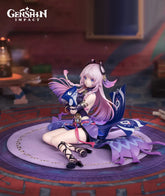
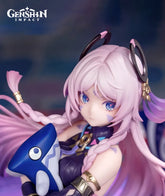
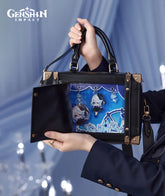
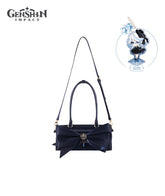
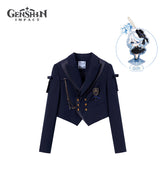

![[Official Merchandise] Genshin Impact Theme Vision Keychain Charm](http://genshinfans.com/cdn/shop/files/ZT01_4ff643a3-f4c7-4e69-949d-97312b5da85d_165x.jpg?v=1722241611)
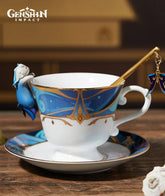
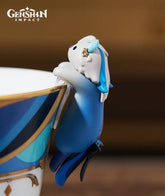
![[Official Merchandise] Alhaitham Impression Tote Bag Of Forest and Sand Collection](http://genshinfans.com/cdn/shop/files/Alhaitham-Genshin-impact-Tote-Bag_165x.jpg?v=1718094435)
![[Official Merchandise] Alhaitham Impression Tote Bag Of Forest and Sand Collection](http://genshinfans.com/cdn/shop/files/Alhaitham-Genshin-Tote-Bag_165x.jpg?v=1718094435)
![[Official Merchandise] Kaedehara Kazuha Impression Bracelet](http://genshinfans.com/cdn/shop/files/ZT02_cacb626a-33db-414d-aab1-63e59b0a0ba8_165x.jpg?v=1698747523)
![[Official Merchandise] Kaedehara Kazuha Impression Bracelet](http://genshinfans.com/cdn/shop/files/ZT04_79fecbdd-ac05-4a1a-9488-4814e86eeee1_165x.jpg?v=1698747523)
![[Official Merchandise] Arlecchino Impression Afternoon Tea Cup and Saucer Set](http://genshinfans.com/cdn/shop/files/Arlecchino-Impression-Afternoon-Tea-Cup_165x.jpg?v=1714383254)
![[Official Merchandise] Arlecchino Impression Afternoon Tea Cup and Saucer Set](http://genshinfans.com/cdn/shop/files/Arlecchino-Impression-Afternoon-Tea-Cup2_165x.jpg?v=1714383255)
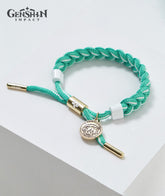

![[Official Merchandise] Genshin Impact Freminet Clockwork Penguin Toy](http://genshinfans.com/cdn/shop/files/zy-03_165x.jpg?v=1700188488)
![[Official Merchandise] Genshin Impact Freminet Clockwork Penguin Toy](http://genshinfans.com/cdn/shop/files/zy-02_165x.jpg?v=1700188488)

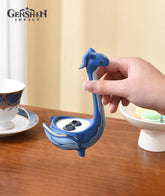
![[Official Merchandise] Kaveh Impression Accordion Bag Of Forest and Sand Collection](http://genshinfans.com/cdn/shop/files/Kaveh-Genshin-Accordion-Bag_165x.jpg?v=1718158410)
![[Official Merchandise] Kaveh Impression Accordion Bag Of Forest and Sand Collection](http://genshinfans.com/cdn/shop/files/Kaveh-Accordion-Bag_165x.jpg?v=1718158163)
![[Official Merchandise] Wanderer Impression Necklace](http://genshinfans.com/cdn/shop/files/ZT03_00713fd9-fa42-42b0-b5eb-382195bc673e_165x.jpg?v=1739931344)
![[Official Merchandise] Wanderer Impression Necklace](http://genshinfans.com/cdn/shop/files/ZT00_165x.jpg?v=1739931344)

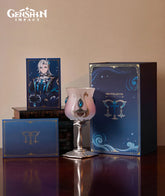
![[Official Merchandise] Genshin Impact Slime Retractable Ballpoint Pen](http://genshinfans.com/cdn/shop/products/07_472efba6-f174-4a53-b15d-56769621c2e0_165x.jpg?v=1693018334)
![[Official Merchandise] Genshin Impact Slime Retractable Ballpoint Pen](http://genshinfans.com/cdn/shop/files/ZT02_cb12602b-db09-4581-82fa-455a41514c27_165x.jpg?v=1693018112)

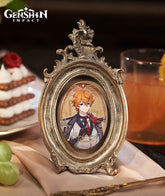
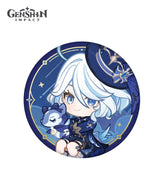

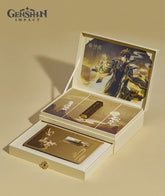
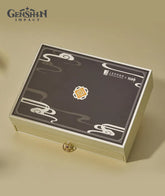
![[Official Merchandise] Kaedehara Kazuha Impression Glasses Gift Box](http://genshinfans.com/cdn/shop/files/ZT04_a3c9b763-169f-4973-94f3-f87ae495e70c_165x.jpg?v=1698721579)
![[Official Merchandise] Kaedehara Kazuha Impression Glasses Gift Box](http://genshinfans.com/cdn/shop/files/ZT03_bcb20072-aeb4-46ba-a928-1b6f6d398dda_165x.jpg?v=1698721579)
![[Official Merchandise] Genshin Impact Electro Slime Night Light Lamp](http://genshinfans.com/cdn/shop/files/ZT01_77c5d092-f338-494f-b340-36295cdf4c8b_165x.jpg?v=1691819158)
![[Official Merchandise] Genshin Impact Electro Slime Night Light Lamp](http://genshinfans.com/cdn/shop/files/ZT02_83beb693-8811-475a-b350-6a3368999d49_165x.jpg?v=1691819158)
